What Does the Digital SAT Reference Sheet Include?
Author
Phoenix Wilder
Date Published
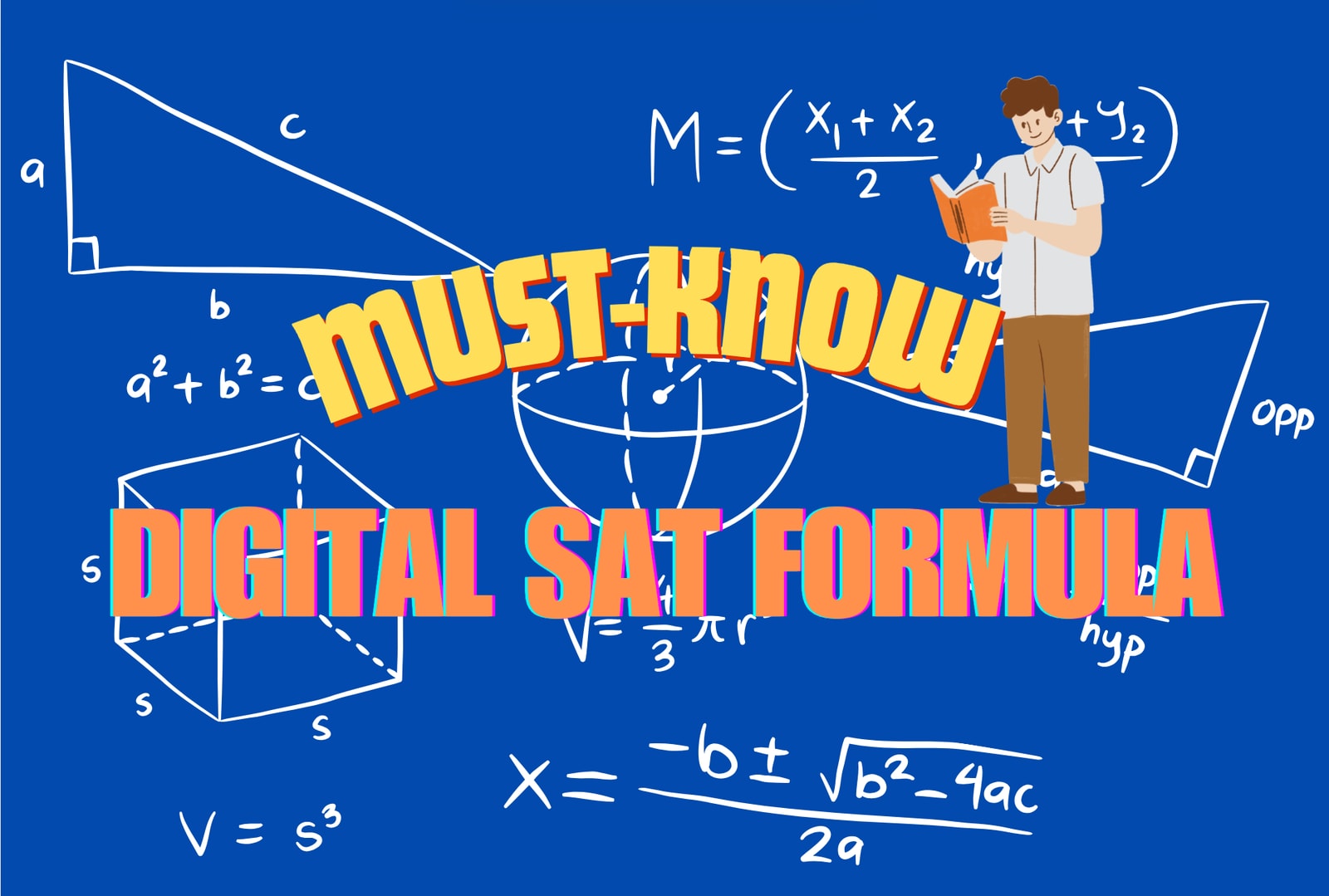
The SAT has always offered a reference sheet to aid students with the math section, but how has it evolved with the digital test format?
In this article, we’ll explore the contents of the digital SAT reference sheet—and highlight what’s missing. You’ll also find custom SAT formula sheets, which cover all the critical formulas you’ll need to memorize before SAT test day.
Overview of the Digital SAT Math Section
The math portion of the digital SAT is designed to assess students across four content categories: Algebra, Advanced Math, Problem Solving & Data Analysis, and Geometry & Trigonometry.
In contrast to the Reading & Writing section, which groups questions by category, the math section blends these topics throughout. However, questions are arranged in order of difficulty, beginning with simpler ones and progressing to more challenging problems.
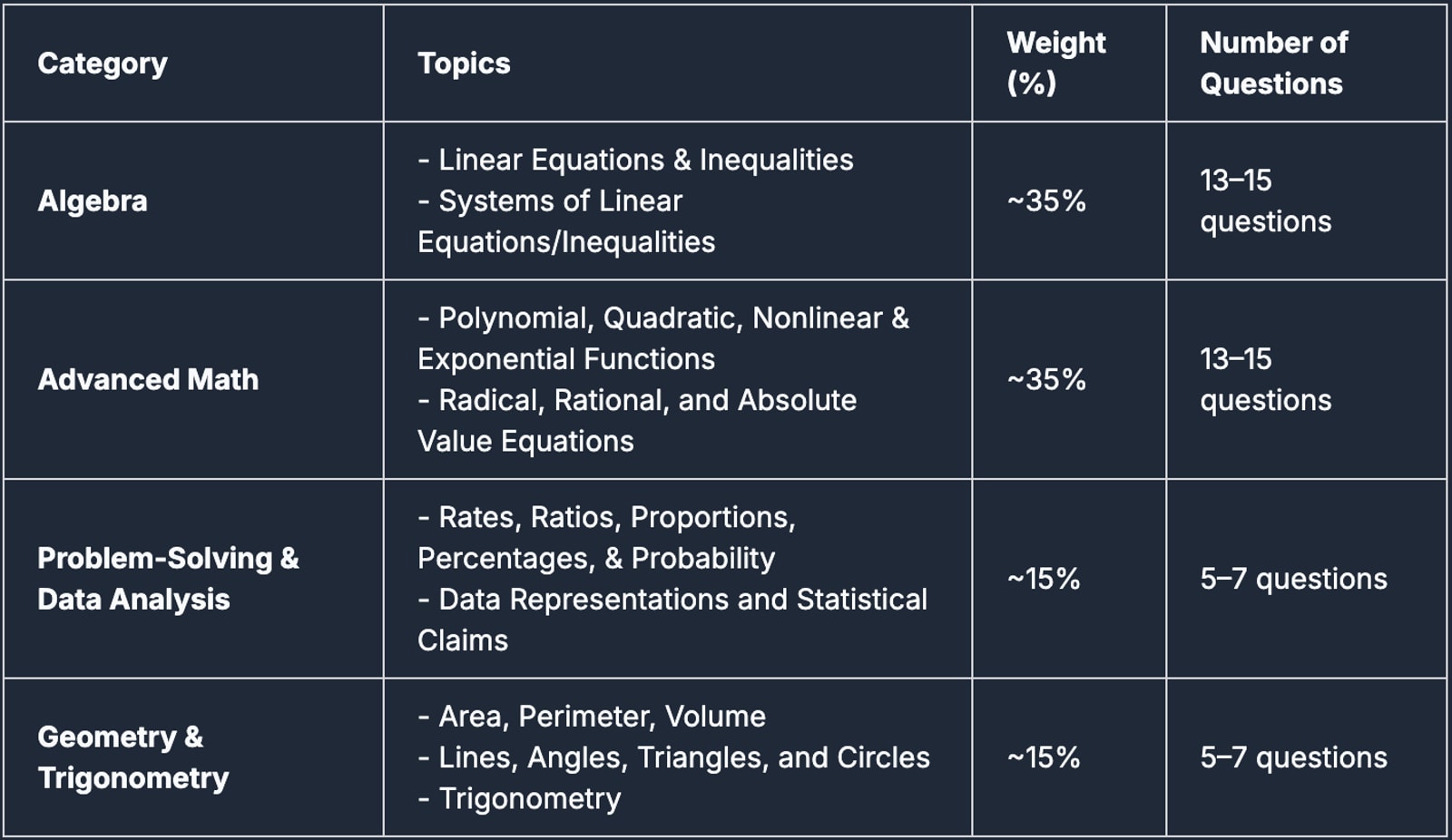
As shown above, roughly 70% of the math questions fall under the Algebra and Advanced Math categories, which are primarily derived from Algebra I and II. The remaining 30% are split between Problem Solving & Data Analysis—focused on topics from science and math courses—and Geometry & Trigonometry, which students usually encounter in courses like Geometry and Pre-Calculus.
Additionally, about 70% of math problems involve basic equations, while the remaining 30% are word problems—questions that contextualize math scenarios, limited to a maximum of 50 words each.
A significant change to the SAT format is that calculators can now be used throughout the math section, eliminating the previous division between “No Calculator” and “Calculator” sections. With 70 minutes and 44 questions, students have approximately 95 seconds per question. This provides extra time for multi-step problems that may involve more extensive calculator use.
It’s important to note that, despite allowing calculators throughout, the math section is still split into two modules: a fixed Module 1 that all students take and an adaptive Module 2, which varies in difficulty based on the student’s Module 1 performance.
To further aid students, the College Board provides scratch paper (as many sheets as needed) as well as a reference sheet for Geometry and Trigonometry formulas.
What Formulas Are on the Digital SAT Reference Sheet?
The reference sheet simplifies solving geometry-related math problems by including formulas students are already familiar with. This allows candidates to approach questions more efficiently without having to recall these formulas from memory.
The formula sheet provided for the digital SAT primarily focuses on geometric formulas and concepts:
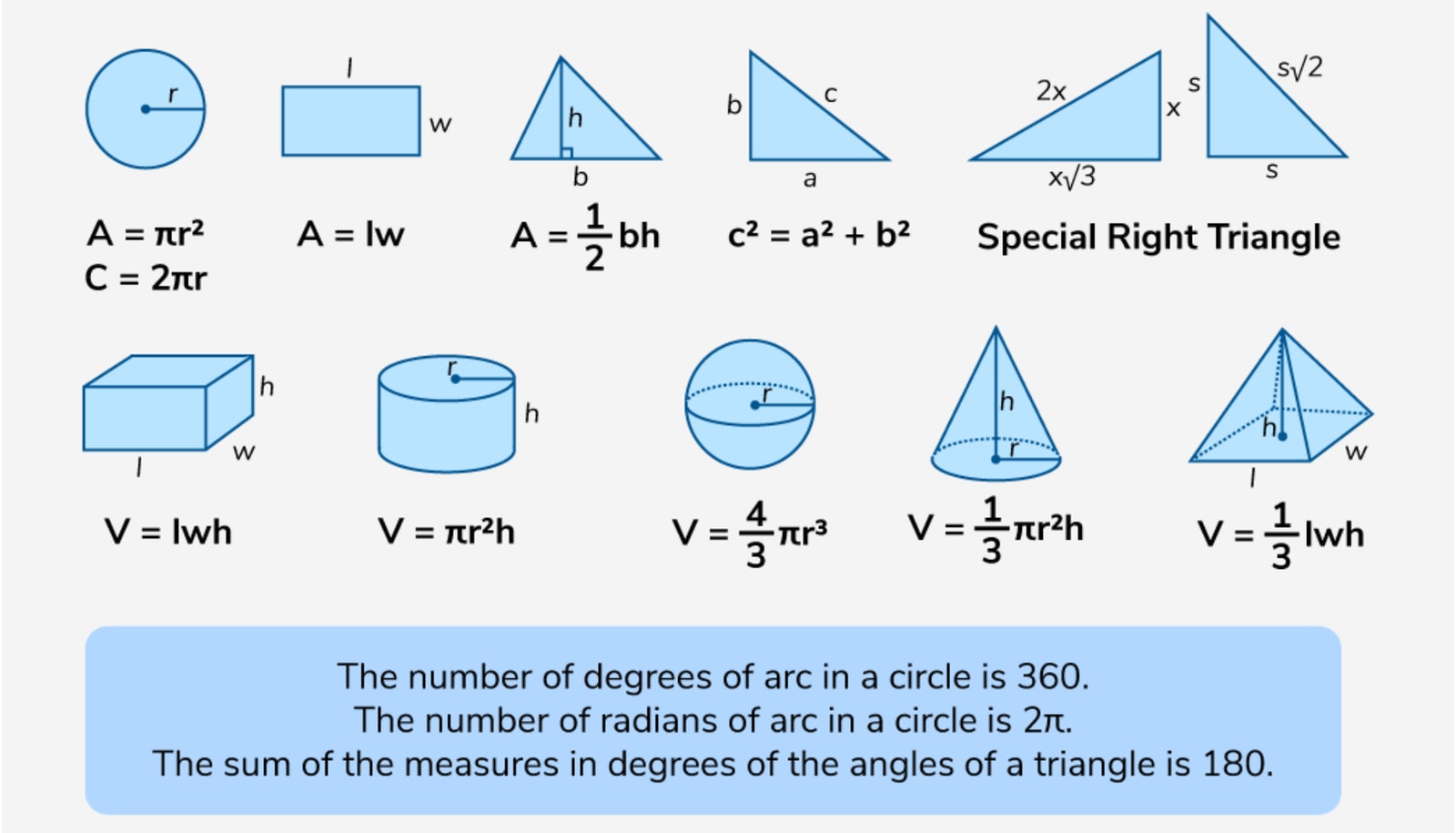
As shown above, the SAT math formula sheet specifically includes formulas useful for tackling Geometry and Trigonometry problems.
This reference sheet contains formulas for calculating the circumference and area of circles, rectangles, and triangles, as well as the volume of rectangular prisms, cylinders, spheres, cones, and pyramids. Additionally, it provides the Pythagorean Theorem and details regarding the angles associated with special right triangles.
Important Formulas Not Included on the SAT Reference Sheet
Although the reference sheet provides essential geometric formulas, students need to memorize algebra, advanced math, and data analysis formulas before test day. Below is an overview of important formulas not provided:
Must-Know Algebra Formulas
Algebra questions assess knowledge of linear equations, functions, and inequalities. Test-takers should master key representations of lines, such as:
- Standard Form
- Point-Slope Form
- Slope-Intercept Form
- Slope

Advanced Math Formulas to Remember
The Advanced Math questions on the SAT are based on topics typically covered in Algebra and Algebra II courses. Students need to be comfortable working with linear and quadratic systems of equations, polynomials, nonlinear functions, exponential functions, radicals, absolute value equations, and other higher-level algebra concepts.
Key functions and formulas in Advanced Math that students should review before taking the SAT include:
- Quadratic equations (Standard, Quadratic, and Vertex Forms)
- Factoring polynomials
- Rules of radical operations
- Properties of radicals
- Exponential functions
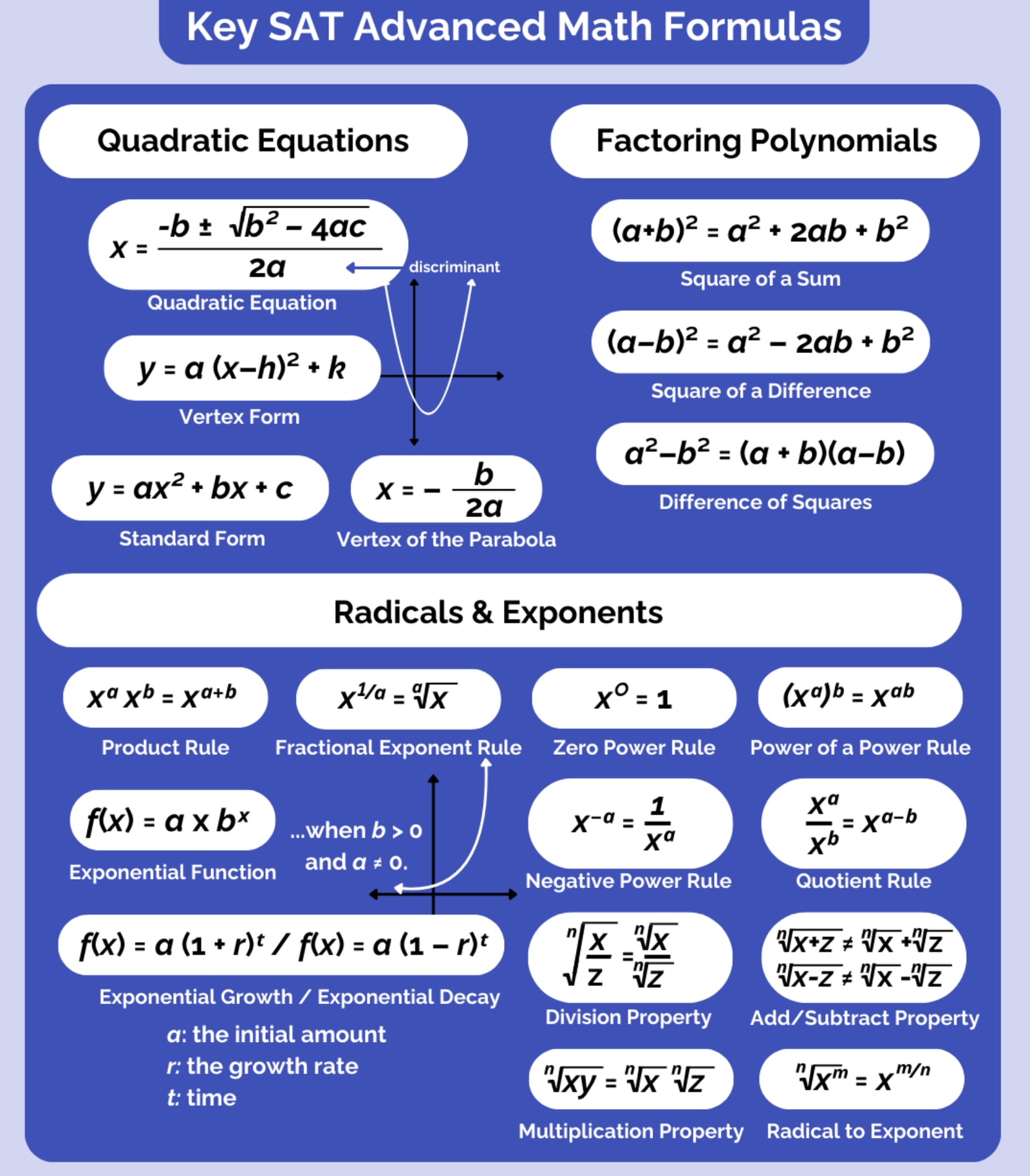
Data Analysis and Statistics Concepts
The Problem-Solving and Data Analysis questions on the SAT cover a range of topics, including percentages, probability, and interpreting charts and graphs. These questions are similar to the ACT Science section in that they test a student’s ability to understand and analyze data presented in various formats.
Students preparing for the SAT should be comfortable with formulas and techniques for working with data sets, such as calculating averages, percentages, and probabilities, as well as converting between percentages, fractions, and decimals.

Geometry and Trigonometry Formulas Not Found on the Reference Sheet
As you’ve learned, the SAT math reference sheet only provides formulas related to Geometry and Trigonometry topics. However, it doesn’t cover all the formulas and concepts you’ll need to know for this section.
SAT Geometry and Trigonometry questions are primarily based on topics from Geometry and Pre-Calculus courses. To perform well on these questions, it’s essential to have a strong grasp of angles, circles, and triangles, including:
- Equation of a circle
- Length of an arc
- Area of a sector
- Angles in parallel & intersecting lines
- Finding sin, cos, and tan
- Types of triangles
- Angles in triangles
- Surface Area of 3D Shapes

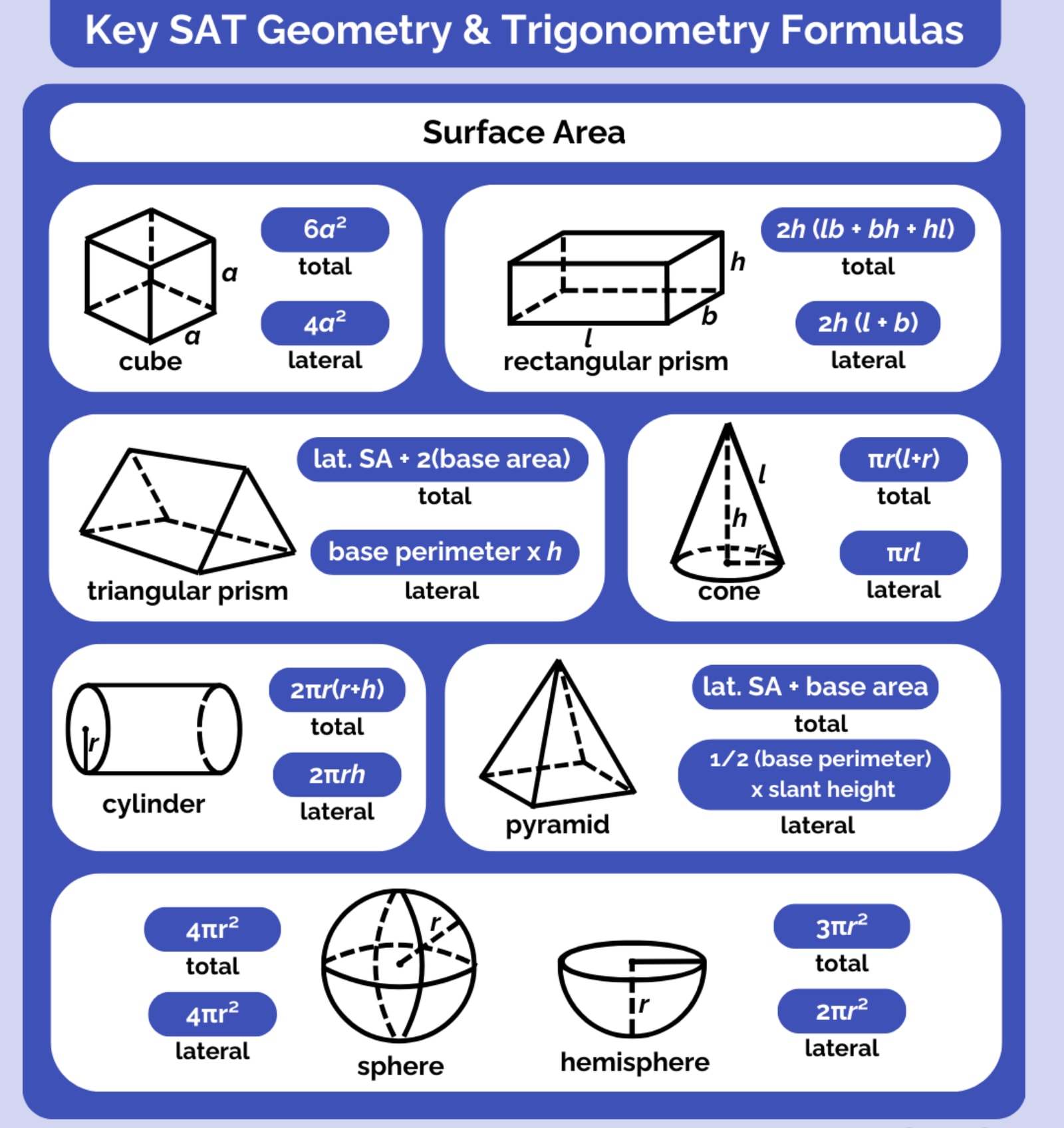
Tips for Preparing for the Digital SAT Math Section
Familiarizing yourself with what’s included—and excluded—on the SAT reference sheet is key to performing well on test day. Memorize the missing formulas and write them down as soon as you receive scratch paper to save time and reduce stress.
Success on the SAT requires consistent practice. Cycle through taking practice exams, reviewing weak areas, and solving targeted practice questions to improve steadily. If needed, consider retaking the test to reach your goal score.With proper preparation and an understanding of the SAT’s math section, you’ll be ready to achieve your best possible result!
If you're looking for affordable and comprehensive resources to excel in your Math and Reading SAT preparation, bestsatscore is here to help. We offer full-length practice tests, expert-curated question banks, smart flashcards, and more—everything you need to confidently achieve your best SAT score!
Related Posts

Unlock the secret to scoring a perfect 800 on SAT Math! Learn expert strategies and test-taking tips to maximize your score and boost your confidence.

Discover proven strategies to score a perfect 800 on the SAT Reading and Writing sections. Learn essential skills and tips for test day success.